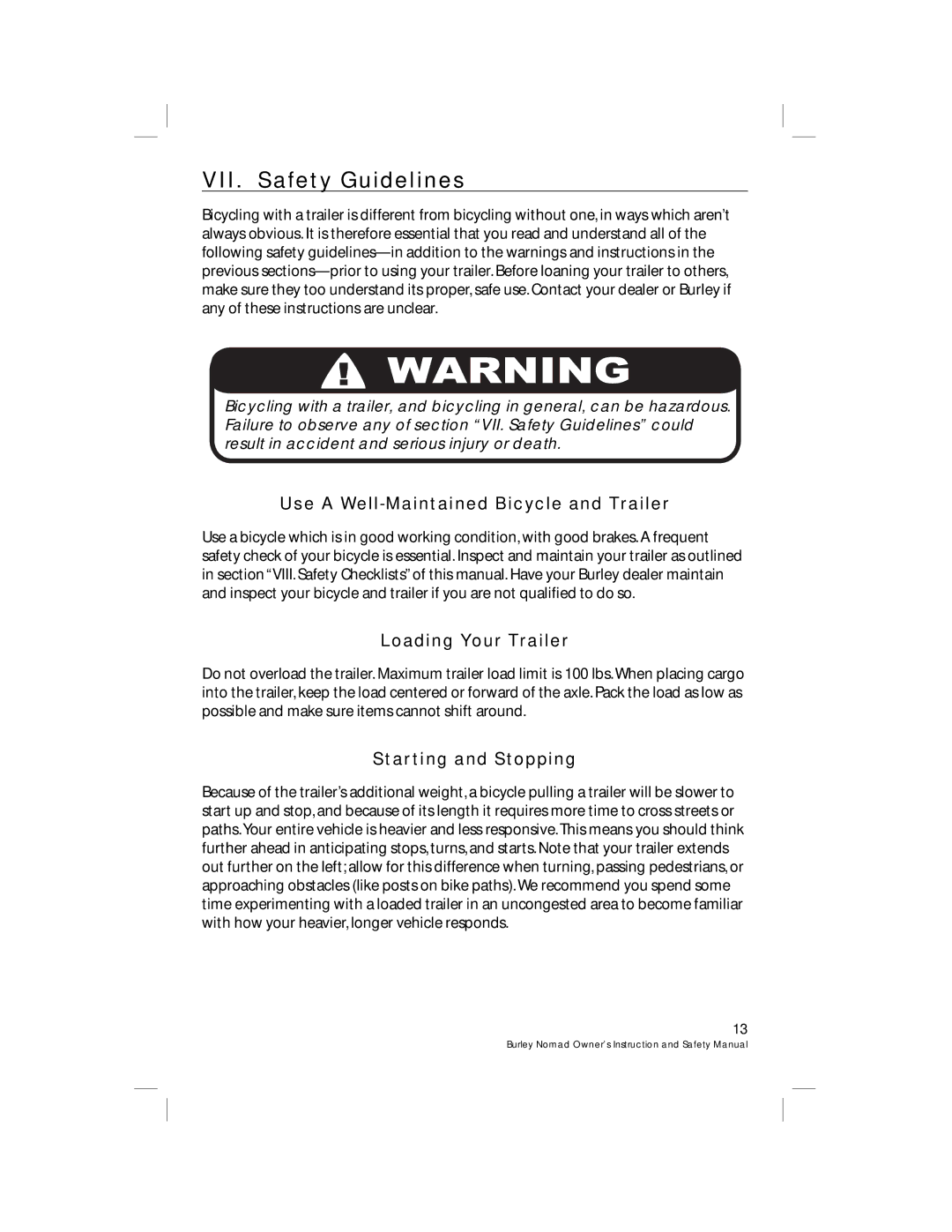
VII. Safety Guidelines
Bicycling with a trailer is different from bicycling without one, in ways which aren’t always obvious. It is therefore essential that you read and understand all of the following safety
Bicycling with a trailer, and bicycling in general, can be hazardous. Failure to observe any of section “VII. Safety Guidelines” could result in accident and serious injury or death.
Use A Well-Maintained Bicycle and Trailer
Use a bicycle which is in good working condition, with good brakes. A frequent safety check of your bicycle is essential. Inspect and maintain your trailer as outlined in section “VIII. Safety Checklists” of this manual. Have your Burley dealer maintain and inspect your bicycle and trailer if you are not qualified to do so.
Loading Your Trailer
Do not overload the trailer. Maximum trailer load limit is 100 lbs. When placing cargo into the trailer, keep the load centered or forward of the axle. Pack the load as low as possible and make sure items cannot shift around.
Starting and Stopping
Because of the trailer’s additional weight, a bicycle pulling a trailer will be slower to start up and stop, and because of its length it requires more time to cross streets or paths.Your entire vehicle is heavier and less responsive. This means you should think further ahead in anticipating stops, turns, and starts. Note that your trailer extends out further on the left; allow for this difference when turning, passing pedestrians, or approaching obstacles (like posts on bike paths). We recommend you spend some time experimenting with a loaded trailer in an uncongested area to become familiar with how your heavier, longer vehicle responds.
13
